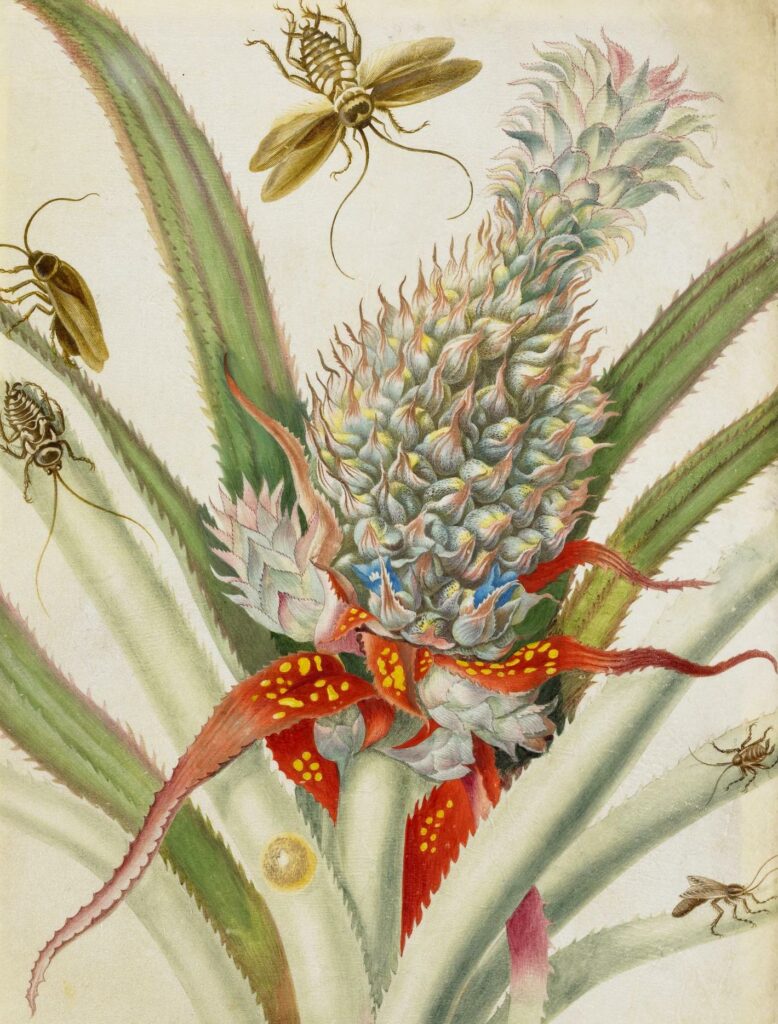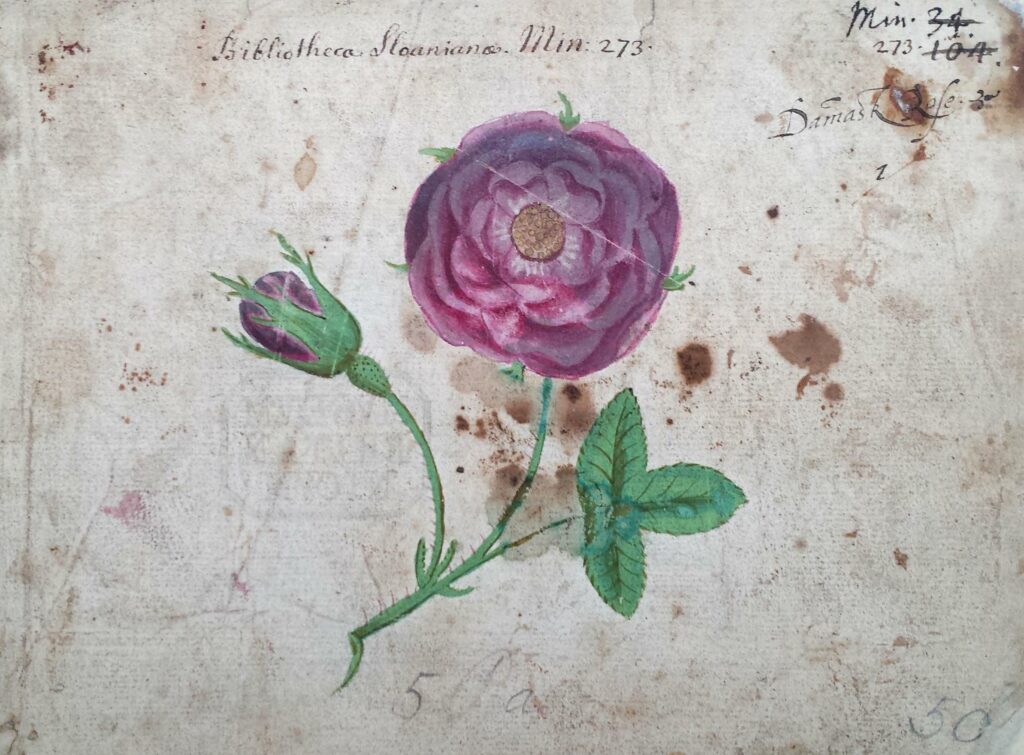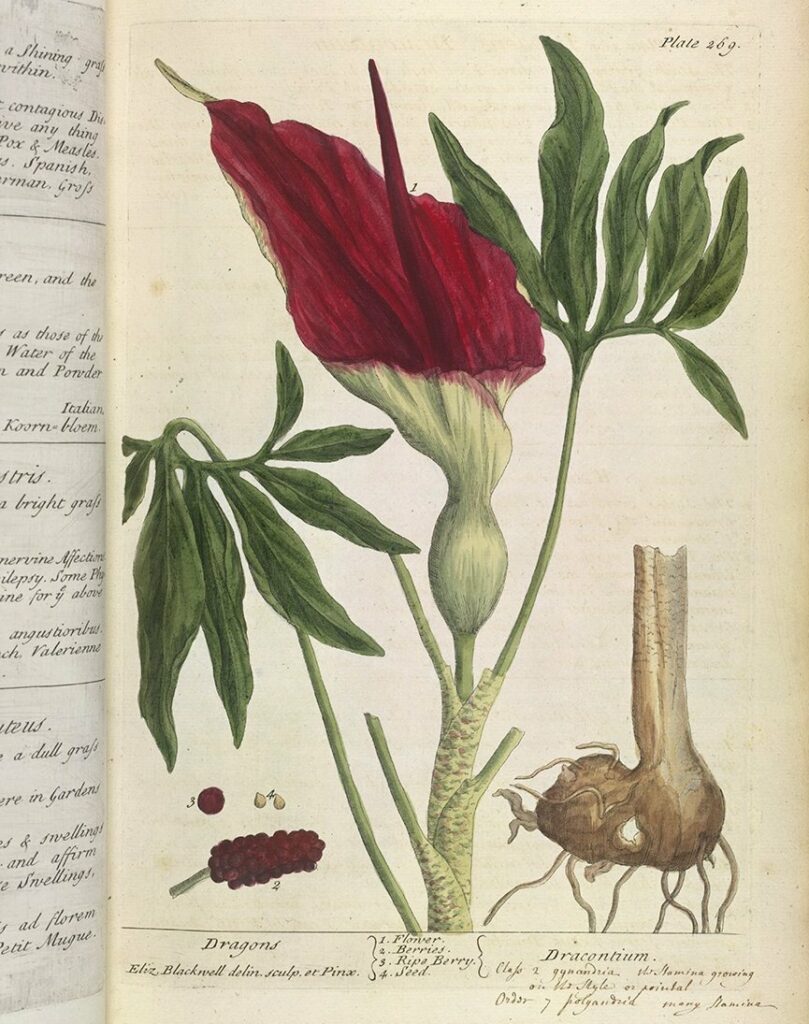Sloane Lab Community Fellow Dr Rosalind White is a cultural historian who specialises in uncovering ‘lost’ stories through object-led archival research. Her PhD, funded by the AHRC, explored natural history’s influence on Victorian literature and culture, emphasising the overlooked contributions of women, children, and working-class naturalists. As a Research Fellow at the University of Birmingham on the ‘CLiC Dickens’ project, she conducts corpus linguistics research to advance scholarly understanding, enrich pedagogical methods, and foster creative exploration of the long nineteenth century. She is also working as a Collections Assistant at Strawberry Hill House & Gardens, home of renowned collector Horace Walpole.
In 1753, Hans Sloane, an eminent physician and naturalist, left a remarkable legacy to the nation — a colossal cabinet of curiosity, amassed from around the globe and across a lifetime. This extensive and eclectic collection included more than 50,000 books, 60,000 prints and drawings and a large herbarium of over 120,000 botanical specimens. His historic bequest provided an invaluable resource for ‘all curious and interested persons’ and helped lay the foundation for the British Museum, the British Library, and the Natural History Museum. The Sloane Lab project, supported by the AHRC’s “Towards a National Collection” programme, aims to digitally unify and forge new connections across these dispersed collections.

Figure 1. Maria Sibylla Merian (1647–1717). Pineapple and examples of five insects, from an album of 91 drawings entitled ‘Merian’s Drawings of Surinam Insects &c’, Watercolour and bodycolour on vellum,1701–1705, (detail) © The Trustees of the British Museum, released as CC BY-NC-SA 4.0
Tucked away in the margins of Sloane’s catalogues lies the untold stories of countless individuals whose contributions to science have largely remained in the shadows. My project, In the Margins of Early Modern Science: Pioneering Women in Sloane’s ‘Paper Museum’, seeks to illuminate the under-recognised contributions of female artists and scientists within these archives. In the course of my fellowship, I hope to redefine the narrative surrounding Sloane’s collections by providing a more comprehensive understanding of the historical context in which they were formed, so that these pioneering women receive the recognition they deserve in the annals of science and art history.
Guided by Sloane Lab Team members Alicia Hughes (The British Museum), Kim Sloan (The British Museum), and Victoria Pickering (Natural History Museum), my fellowship will leverage the rich repository of data provided by the Sloane Lab Knowledge Base to focus on the contributions of women within Sloane’s “Paper Museum” — a vast compendium comprising approximately 1000 illustrated books,100 picture albums and an estimated 60,000 drawings, prints, and paintings.

Figure 2. Leaf from a sketchbook now containing 37 leaves of drawings of flowers, plants and birds; crimson Damask rose and bud, attributed to Mrs Ellen Power c. 1650-1670. © The Trustees of the British Museum, released as CC BY-NC-SA 4.0
I will be examining both Sloane’s catalogue of Books and Printed Ephemera (Sloane MS 3972C Vol. VI), focusing particularly on his ‘books of miniature, painting, designs,’ as well as his extensive library of printed books, which at the time of his bequest included over 50,000 volumes. The latter endeavour is complicated by the fact that many of these volumes were either dispersed or their provenance obscured.
Many of Sloane’s specimens served as subjects for scientific illustrations; so, where possible, I plan to identify illustrations created by women and pair them with the corresponding specimens catalogued in Sloane’s collections and recorded in the Sloane Lab Knowledge Base.

Figure 3. Elizabeth Blackwell (1707–1758). Illustration of the flower, berries, and seeds of a dragon plant, from ‘A Curious Herbal’, Plate 269. Engraving, 1737–1739. Held at the British Library, London, UK. Original source: 452.f.2. Public Domain.
Overall, this project not only aims to illuminate the contributions of these pioneering women but also seeks to integrate their stories into the broader narrative of scientific and artistic achievement during the early modern period. By re-examining these contributions through the lens of digital humanities, we can provide a more inclusive and accurate portrayal of history, ensuring that the impact of these women is recognised and celebrated. This endeavour will not only enrich our understanding of the past but also inspire future generations of researchers and artists to explore the rich intersections of science, art, and history. Finally, If you would like to follow along with my research, you can find me on X (formerly Twitter) @DrRosalindWhite.
